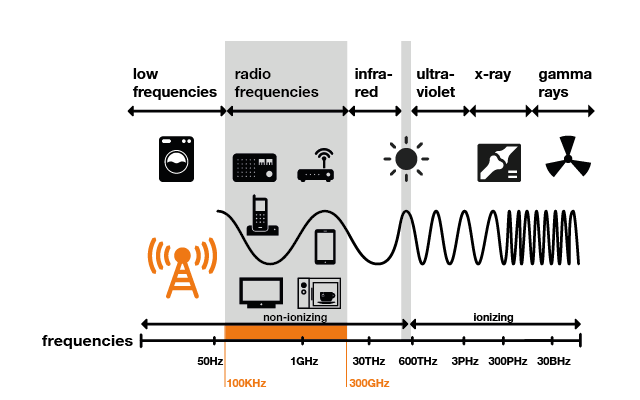Electromagnetic Waves and Communication
- Get link
- Other Apps
Electromagnetic Waves and Communication: Connecting the World
Introduction:
In today's interconnected world, communication plays a pivotal role in our daily lives. From sending text messages to streaming videos, our ability to transmit and receive information seamlessly relies on the remarkable phenomenon of electromagnetic waves. In this article, we will explore the concept of electromagnetic waves, their properties, and how they revolutionized the field of communication.
Understanding Electromagnetic Waves:
Electromagnetic waves are a form of energy propagation that combines electric and magnetic fields oscillating perpendicular to each other and perpendicular to the direction of wave propagation. These waves are generated by the acceleration of charged particles or by the oscillation of electric charges. Electromagnetic waves encompass a broad spectrum, including radio waves, microwaves, infrared radiation, visible light, ultraviolet radiation, X-rays, and gamma rays.
Properties of Electromagnetic Waves:
To comprehend the nature of electromagnetic waves, let's delve into their key properties:
1. Wavelength: Wavelength is the distance between two consecutive crests or troughs of a wave. It is denoted by the Greek letter lambda (λ) and is measured in meters (m). Different types of electromagnetic waves have varying wavelengths, ranging from kilometers for radio waves to picometers for gamma rays.
2. Frequency: Frequency refers to the number of complete wave cycles passing through a point in one second. It is measured in hertz (Hz) and is denoted by the symbol f. The frequency of an electromagnetic wave is inversely proportional to its wavelength. Higher frequencies correspond to shorter wavelengths and vice versa.
3. Speed: Electromagnetic waves travel at a constant speed in a vacuum, known as the speed of light (c). The speed of light is approximately 299,792,458 meters per second (m/s). This speed remains constant regardless of the wavelength or frequency of the electromagnetic wave.
4. Electromagnetic Spectrum: The electromagnetic spectrum encompasses the entire range of electromagnetic waves, extending from radio waves with the longest wavelength to gamma rays with the shortest wavelength. Each region of the spectrum has unique properties and applications, making it a powerful tool for various fields of science and technology.
Electromagnetic Waves and Communication:
The discovery of electromagnetic waves laid the foundation for modern communication systems. Here are some key applications:
1. Radio Communication: Radio waves, with their long wavelengths and low frequencies, are used for broadcasting, wireless communication, and radar systems. From AM/FM radio to television broadcasting and wireless internet, radio waves have revolutionized long-distance communication.
2. Microwave Communication: Microwaves, with their shorter wavelengths and higher frequencies, are widely used for satellite communication, cellular networks, and microwave ovens. They enable the transmission of vast amounts of data and facilitate wireless communication over large distances.
3. Infrared Communication: Infrared waves have wavelengths slightly longer than those of visible light. They are utilized in infrared remote controls, infrared data transmission, and thermal imaging technology. Infrared communication enables us to control devices remotely and transfer data wirelessly.
4. Visible Light Communication: Visible light, the portion of the electromagnetic spectrum that is visible to the human eye, has gained prominence in recent years for communication purposes. Visible light communication (VLC) utilizes light-emitting diodes (LEDs) to transmit data, offering high-speed and secure communication in indoor environments.
5. Fiber Optic Communication: Fiber optic communication relies on the transmission of light signals through optical fibers. The use of light allows for high-speed data transmission over long distances with minimal signal loss. Fiber optic cables form the backbone of modern telecommunications networks, providing the infrastructure for internet connectivity and long-distance communication.
6. Wireless Communication: Electromagnetic waves have paved the way for wireless communication systems such as Wi-Fi, Bluetooth, and cellular networks. These technologies utilize different bands of the electromagnetic spectrum to transmit data wirelessly, enabling seamless communication and connectivity.
7. Satellite Communication: Satellites orbiting the Earth use electromagnetic waves to relay signals for various purposes, including television broadcasting, weather monitoring, global positioning systems (GPS), and long-distance communication. Satellites facilitate global communication, connecting people across continents and enabling real-time information exchange.
The Future of Electromagnetic Wave Communication:
As technology continues to advance, the potential applications of electromagnetic waves in communication are expanding. Here are a few areas where we can expect further development:
1. 5G Technology: The fifth-generation (5G) wireless technology aims to revolutionize communication by providing faster speeds, lower latency, and increased capacity. 5G networks utilize higher frequency bands, such as millimeter waves, to enable faster and more efficient data transmission.
2. Internet of Things (IoT): The IoT relies on wireless communication to connect a vast network of devices, enabling them to share data and interact with each other. Electromagnetic waves play a crucial role in enabling the seamless communication and coordination of IoT devices.
3. Quantum Communication: Quantum communication utilizes the principles of quantum physics to transmit information securely. Quantum-entangled photons can be used to create unbreakable encryption methods and enable ultra-secure communication networks.
4. Terahertz Communication: Terahertz waves, with frequencies between microwaves and infrared waves, hold promise for high-speed wireless communication. Researchers are exploring the use of terahertz waves to achieve data rates far surpassing current technologies.
Conclusion:
Electromagnetic waves have transformed the way we communicate, enabling rapid information exchange over vast distances. From radio waves to visible light and beyond, each region of the electromagnetic spectrum has unique properties and applications. The advancements in wireless communication, satellite technology, and fiber optics have connected the world in unprecedented ways. As technology continues to evolve, the potential applications of electromagnetic waves in communication are expanding, offering exciting possibilities for a connected future.
- Get link
- Other Apps

Comments
Post a Comment